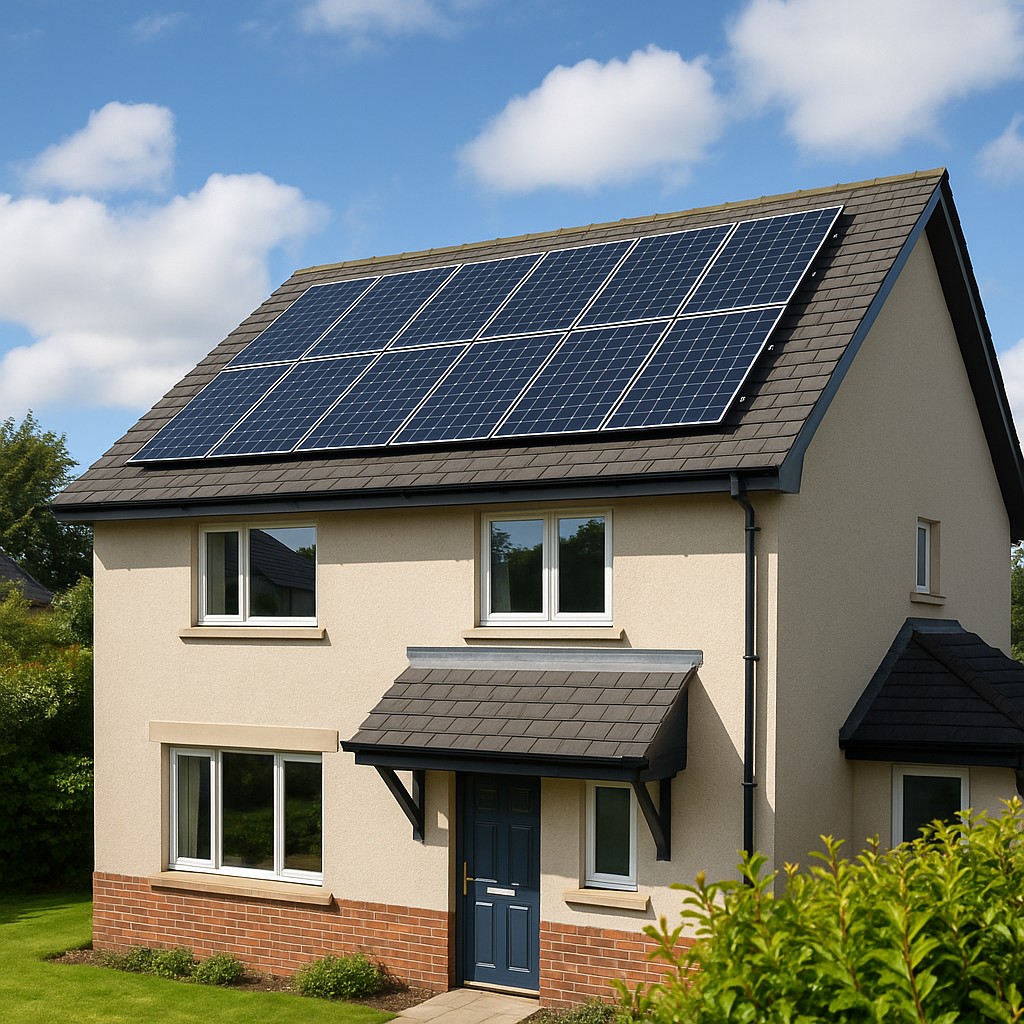Solar panels collect solar radiation directly from the sun, from the sky, and from sunlight reflected off the ground or area surrounding the PV panel. Orienting the PV panel in a direction and tilt to maximize its exposure to direct sunlight will optimize the collection efficiency. Here we discuss the issues you need to consider when looking at your roof from the perspective of installing solar panels.
Orientation of your roof
The orientation of your roof has a significant affect on how productive your solar panels will be.

You would think that having a south facing roof would produce the best result. Indeed, a south facing roof will produce most electricity on an annual basis.
But like most things in life things can be more complicated than that. Having your panels generating electricity during the day when nobody is home might not really be the best solution for you. If you do not have a battery that can store up that power for later then all you are doing is feeding the grid. You will get paid for this but not remotely as much as you are charged for it. Ideally you want to use as much of the power you generate to get the most out of your PV system.
East facing panels will be most productive in the morning and west facing panels will be most productive in the evening. If your house is busy in the morning, empty most of the day and gets busy again early evening when people return from work and school then a mix of an east / west facing system might be the best for you. In raw number terms it might not produce as many kWh of power, but it will be generating the power when you need it and can use it.
Farmers are more and more looking at PV panels to help them with their carbon reduction goals. A dairy farm is busy in the morning and evening with milking. Have and east / west split for their panels will make good sense.
Clearly as mentioned already a battery will help you soak up the power you generate for use when you need it. The bigger the battery the more power you can store for later use. This may or may not be an option for people, solar panels are not cheap, and neither are batteries. The grant from the SEAI certainly helps with the cost of the panels but they are still a significant investment. The SEAI grant towards the cost of batteries has been dropped. When you consider that you will get paid something, around €0.10 per kWh for power exported back to the grid you may decide a battery is not worth it.
As part of their SolarSurvey Solar Share will look at your roof and your pattern of energy use. They will take this data to advise you on the best solar pv configuration for you.
Pitch of your roof
The pitch of your roof also influences the productivity of your solar panels. You will read that the rule of thumb is to have the pitch of your panels match the latitude of your location. Ireland has a latitude of 53 degrees but most panels in Ireland work best with a pitch or tilt of between 30 and 40 degrees from the horizon. Fortunately, that is also the range of most roof pitches here in Ireland.
Shading on your roof
The number of panels you install on your roof can vary widely but they all act as one system. Shading on one panel or module can negatively affect the performance of the whole array of panels. Shading on a panel can be caused by the chimney, tv ariel, another part of the roof or a tree close by casting as shadow over a panel. In many cases there is nothing you can do to stop the shading; you are not going to take down your chimney.
Fortunately, there is ways for the system to overcome this problem. Micro-Inverters and Optimisers are products which can help reduce the effect of shading on a system. They do add to your upfront costs but make your system more efficient over the 20 – 25 years they will be in operation so a good investment.








